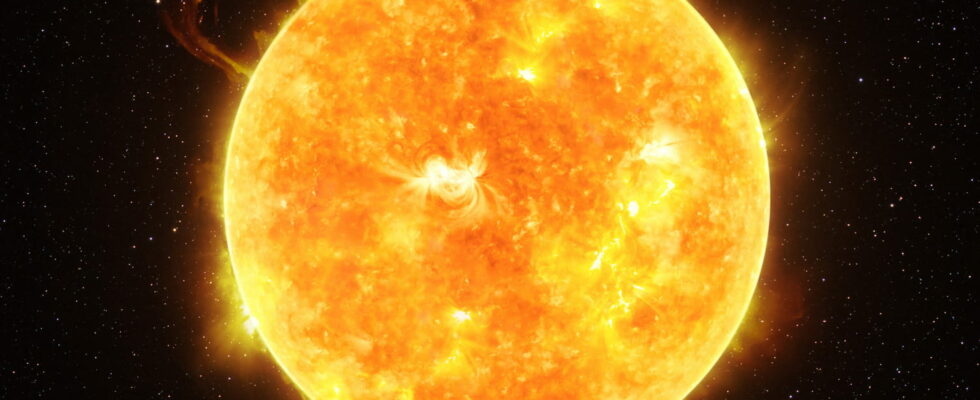According to an international study, in five billion years, the sun will bow out in the form of a superb planetary nebula. Here are the different stages that will mark the end of our star.
In a few billion years, our sun will turn into a huge bright gas bubble. Perhaps slightly visible from other galaxies, this spectacle will sign the end of the existence of the star that saw us being born. Thanks to the observation of similar stars, astronomers have reconstructed the different stages of what could be the apotheosis of the life of the sun, and it promises to be grand.
We have known since the XXe A century that the sun is not immortal and will bow out in 5 billion years. For 4.6 billion years, its heart has been burning continuously, consuming hydrogen, its fuel whose reserves are slowly. As it has exhausted the hydrogen present in its heart, the sun will begin to use the one in its more external layers. Our star will then swell, gradually transforming into a red giant whose diameter will reach almost 200 times its current size. At this stage, it will include Mercury, Venus and probably the earth. Do not imagine that humans will witness this cataclysm: life on our planet will have been turning off for a long time because of the extreme heat linked to the proximity of the sun.

Until recently, the continuation of the fate of our star was uncertain. But in 2018, an international study published in the scientific journal Nature Astronomy revealed that the next step in its existence could be even greater. According to its conclusions, when the sun has consumed all its fuel, its heart will collapse on itself, releasing such a quantity of energy that its external layers will literally be expelled in space. This is where the planetary nebula will be formed: an immense envelope of gas and dust illuminated by the heart of the star. This splendid brilliant bubble could last around 10,000 years.
Despite the end of the planetary nebula, the sun will not yet have completely disappeared. Indeed, there will always be in the form of a white dwarf, a little star no greater than the earth, gradually cooling, a vestige of a hot star dying over fire. This process will take billions of years and sign the end of the life of the sun. In addition, the elements expelled in space by the nebula (carbon, oxygen and nitrogen) will be exploited again during the formation of new stars and planets, testifying to the eternal cycle of death and the birth of the stars.
